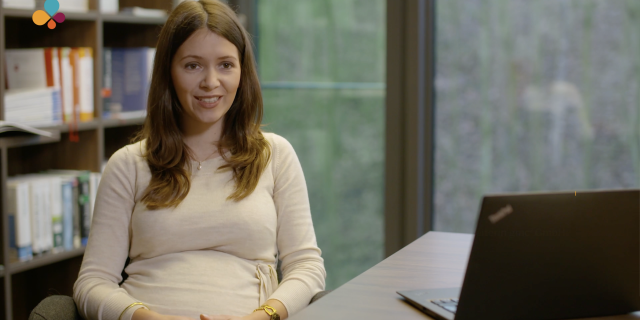Tips for remote work
One employer - many work locations: How can remote work succeed?
We don't always have to be in one place to work well together. For many people, remote working offers new opportunities to combine family and career. How can this form of work be organized well?

Whether at home, in a café or even abroad - in many industries today, it is no longer necessary for a company's employees to sit together in an office every day. This offers many advantages: On some days, they can save themselves the commute to work and pick up the children from daycare earlier, for example. Whether work is done in your own living room or in a café - remote work leads to greater job satisfaction, which also increases the recreational value of free time. A few aspects are important to ensure that employees remain a team and work processes continue to function well:
-
Providing the right infrastructure
Remote working does not mean that employees work exclusively from home or in the office. It means that they are free to choose their place of work. This entails a number of requirements in terms of equipment - from laptops and company cell phones to data protection measures. Discuss together as a team what specific needs you have in your company. The security of your company data through modern and compatible end devices is a factor that should not be underestimated.
-
Enable exchange
Establish new communication channels, such as chat rooms, where you can write and talk to each other at a low threshold. For a more personal exchange, which otherwise takes place automatically in the kitchen or in the corridors, coffee breaks can be held together via digital channels, for example.
-
Agree on framework conditions
However, digital exchange does not usually completely replace face-to-face interaction. There will also be colleagues who prefer to be in the office. Jointly agreed framework conditions help to ensure that all employees feel included and agree with the rules. For example, when does it make sense to come into the office? What work can be done from elsewhere? Should there be fixed office days on which face-to-face meetings can take place? How will the different time zones be dealt with if someone is working abroad?
-
Leading at a distance
The remote working model also places new demands on managers: It is important to build a good relationship of trust with employees when face-to-face meetings become less frequent. It is important to maintain a presence in order to manage and develop the team. Involve your team in solving these issues. For example, discuss how often you would like to meet virtually for meetings - both as a whole team and in one-to-one meetings. However, make sure that your employees do not feel overly controlled, as this could have an impact on the working atmosphere. Develop standards for collaboration and transparently define common goals and the amount of work required to achieve them. It is also important that both managers and employees remain open to criticism. Regularly summarize what works well in the collaboration and what does not. In this way, you can optimize structures and work processes time and again.
Good company examples from practice
Where can we find help and advice?
The Mittelstand-Digital network supports small and medium-sized enterprises throughout Germany on their path to digitalization and enabling remote work.
You can call +49 2224 922 544 for non-binding information about the services offered by the Mittelstand-Digital network or send an email to mittelstand-digital@wik.org.





